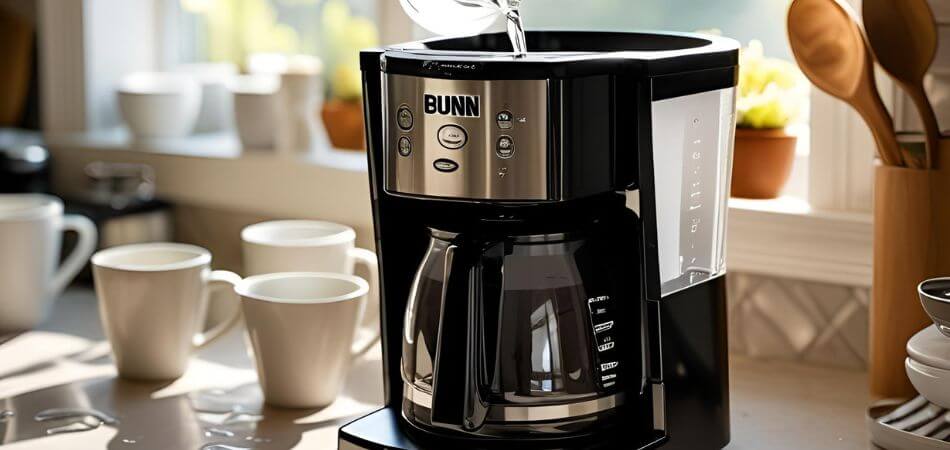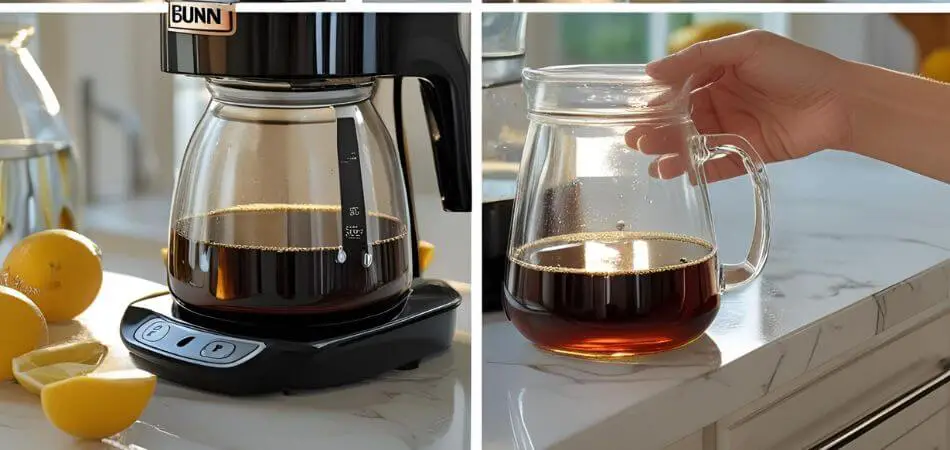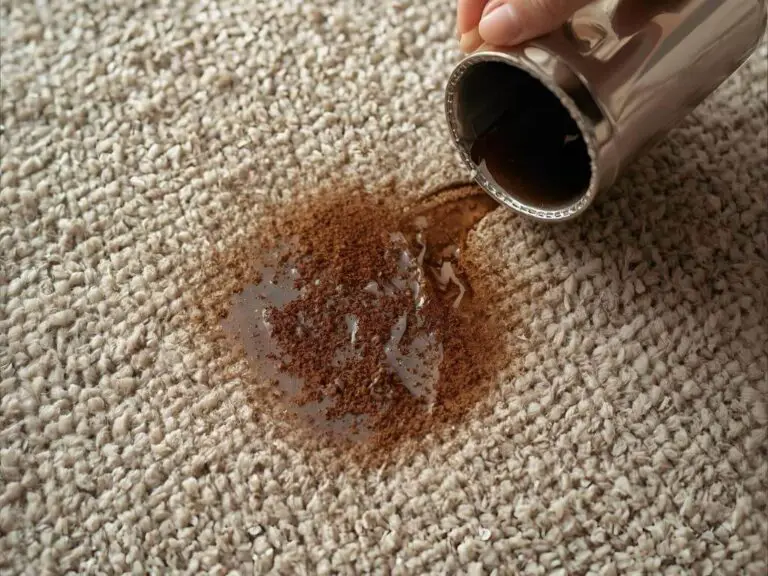How To Clean A Bunn Coffee Maker With Vinegar
Is your Bunn coffee maker running slower than usual or producing coffee that tastes a little… off? If so, mineral buildup from hard water or stale coffee oils might be the culprit. The good news? You don’t need expensive cleaners—just plain white vinegar!
Regular cleaning isn’t just about better-tasting coffee (though that’s a big perk!). It also:
✅ Prevents clogs and slow brewing caused by limescale.
✅ Removes old coffee residue that can make your brew taste bitter.
✅ Extends your machine’s lifespan, saving you money in the long run.
Vinegar is a natural, affordable, and highly effective solution for descaling and sanitizing your Bunn coffee maker. In this guide, I’ll walk you through the simple step-by-step process, share maintenance tips, and answer common questions—so you can enjoy fresh, delicious coffee every time.
Ready to give your machine a deep clean? Let’s get started!
Why Use Vinegar to Clean a Bunn Coffee Maker?
You might wonder, “Why vinegar? Can’t I just use soap and water?” While soap works for exterior cleaning, vinegar tackles what water alone can’t—mineral deposits and deep-set coffee oils. Here’s why it’s the best choice:
1. Breaks Down Mineral Buildup (Descaling)
Hard water contains calcium and magnesium, which leave scale deposits inside your coffee maker. Over time, this buildup:
- Slows down brewing time.
- Reduces heating efficiency.
- Can even clog internal parts.
Vinegar’s acetic acid dissolves these minerals gently, restoring your machine’s performance.
2. Removes Coffee Oils & Residue
Old coffee oils stick to the carafe, filter basket, and internal tubing, leading to:
☕ Bitter or rancid-tasting coffee
☕ Unpleasant odors
A vinegar rinse cuts through this residue, leaving your machine fresh.
3. Safe & Non-Toxic
Unlike commercial descaling solutions, vinegar:
✔ Contains no harsh chemicals
✔ Won’t damage internal components (when used correctly)
✔ Is food-safe and inexpensive
4. Doubles as a Sanitizer
Vinegar’s mild acidity also kills bacteria and mold that can grow in damp coffee makers.
Pro Tip: Always use distilled white vinegar—apple cider or balsamic vinegar can leave behind sticky residues.

What You’ll Need
Gathering supplies before you start makes the process smoother. Here’s what you’ll need:
Essential Supplies
| Item | Purpose |
|---|---|
| Distilled white vinegar | Breaks down limescale and coffee residue. |
| Fresh water | Rinses out vinegar after cleaning. |
| Soft cloth or sponge | Wipes down the exterior. |
Optional (But Helpful) Extras
- Toothbrush → Scrubs stubborn stains in the filter basket.
- Mild dish soap → Cleans the carafe and removable parts.
- Rubber gloves → If you have sensitive skin (vinegar can be drying).
Time Required: About 30–45 minutes (mostly hands-off while the vinegar works its magic).

Step-by-Step Cleaning Guide
Step 1: Prep Your Coffee Maker
- Unplug and cool the machine (safety first!).
- Discard used coffee grounds and remove the filter.
- Empty the carafe and rinse it with warm water.
Step 2: Mix the Vinegar Solution
- Ratio: 1:1 vinegar and water (e.g., 2 cups each).
- Why? Full-strength vinegar isn’t necessary—diluting it still works effectively without overdoing the acidity.
Step 3: Run the Cleaning Cycle
- Pour the solution into the water reservoir.
- Place the empty carafe under the brew head.
- Start a brew cycle. After half the solution runs through, pause the cycle and let it sit for 30 minutes. (This soaking time dissolves stubborn deposits.)
- Resume the cycle to flush out the remaining vinegar.
Step 4: Rinse Thoroughly
To prevent vinegary-tasting coffee:
- Fill the reservoir with fresh water.
- Run 2–3 full brew cycles (no vinegar).
- Test the water in the carafe—if it smells/tastes like vinegar, rinse again.
Step 5: Clean Removable Parts & Exterior
- Carafe & Filter Basket: Wash with warm, soapy water. Use a toothbrush for stuck-on grime.
- Exterior: Wipe with a damp cloth. Avoid abrasive scrubbers to prevent scratches.

Maintenance Tips for a Spotless Coffee Maker
Now that your Bunn coffee maker is sparkling clean, let’s keep it that way! Here are my top maintenance tips to prevent heavy buildup between deep cleanings:
Recommended Cleaning Frequency
| Water Type | Cleaning Frequency |
|---|---|
| Hard water (high mineral content) | Every 4-6 weeks |
| Soft water | Every 2-3 months |
| Daily use (3+ pots/day) | Add 2 weeks to above |
Pro Tip: Set a recurring calendar reminder so you never forget!
Daily/Weekly Habits
- After each use:
- Dump leftover coffee (don’t let it sit)
- Rinse carafe with hot water
- Weekly:
- Wipe exterior with damp microfiber cloth
- Clean filter basket with soapy water
Water Quality Matters
- Use filtered water when possible
- If using tap water:
- Let it sit overnight to evaporate chlorine
- Consider a water softener if scale builds quickly
When to Replace Parts
- Water filters: Every 2 months or per manufacturer
- Carafe: If scratched or stained beyond cleaning
- Brew basket: If plastic becomes warped
Fun Fact: *Proper maintenance can extend your coffee maker’s life by 3-5 years!*
Frequently Asked Questions
Let’s tackle some common concerns about vinegar cleaning:
Q: Can I use apple cider vinegar instead?
A: I don’t recommend it. While it works in a pinch, apple cider vinegar:
- Leaves behind sticky residues
- Has stronger odor that’s harder to rinse out
- May contain impurities that could clog your machine
Q: Why does my coffee taste like vinegar after cleaning?
A: This means you need more rinsing! Try:
- Running 4-5 water-only brew cycles
- Using a baking soda rinse (1 tbsp baking soda + 1 quart water)
- Brewing a “sacrificial” pot of cheap coffee to absorb any remaining taste
Q: My machine still isn’t working right after cleaning. What now?
A: Try these troubleshooting steps:
- Check for clogged spray head (use a toothpick to clear holes)
- Ensure water tank is properly seated
- Contact Bunn customer service if issues persist
Q: Can I use this method on other coffee makers?
A: Absolutely! This vinegar cleaning method works for:
- Drip coffee makers
- Single-serve machines (like Keurig)
- Percolators
- French presses (for the carafe)
Safety Note: Never use vinegar in espresso machines with aluminum parts – it can cause corrosion.
Conclusion & Final Thoughts
Congratulations! You’ve just given your Bunn coffee maker the spa treatment it deserves. Let’s recap what we’ve covered:
✔ Why vinegar works – Natural descaling and sanitizing power
✔ Simple 5-step process – From prep to final rinse
✔ Maintenance secrets – Keep your machine happy between cleanings
✔ Troubleshooting tips – Solve common issues with ease
Remember, a clean coffee maker means:
- Better tasting coffee every morning
- Fewer repairs and replacements
- More enjoyable brewing experience
Final Pro Tip: Mark your calendar for your next cleaning day now! Your future self (and your coffee-loving guests) will thank you.







